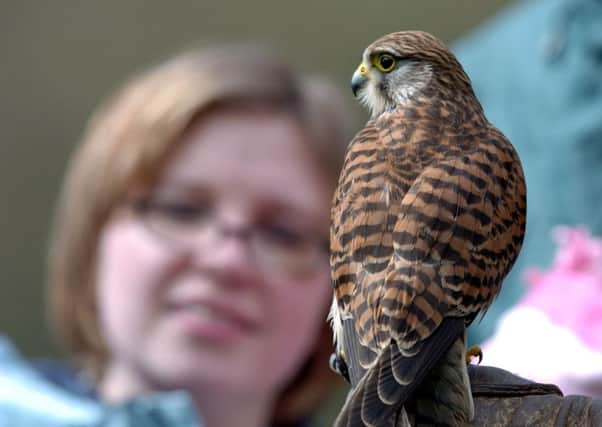Scottish bird of prey numbers on the rise


Experienced bird ringer Neil Morrison has found numbers of the endangered owls on grouse moor areas in Perthshire bucking national trends.
He claimed a partnership between conservationists and gamekeepers was making the difference.
Advertisement
Hide AdAdvertisement
Hide AdFor two decades, the “hobby” owl specialist, licensed to ring birds by BTO (British Trust for Ornithology) Scotland, has counted numbers of various bird species in three neighbouring glens comprising grouse moor and farmland and said the short-eared owls population was among the strongest in the UK.
At least 18 pairs of the amber-listed birds of prey have bred in the past two years and kestrels, declining alarmingly across Britain, are thriving, with 11 breeding pairs recorded since 2014.
His communication with the gamekeeping staff has also recently enabled BBC Natural World programmers to film owls hunting.
On the eve of the 2015 grouse season, which opens tomorrow, the raptor expert believes warring factions should learn to put differences aside so birdlife can be the winner.
Mr Morrison said: “All my interest is in birds. I have never got involved in countryside politics but, personally, the benefits I have reaped from working with gamekeepers and landowners has been far greater than I initially thought.
“All professions have good and bad but, from my experience, gamekeepers tend to get tarred with the same brush. For me, I couldn’t have worked on long-term projects without them.
“The owls have an amazing record of success in these three glens and it must be to do with the land management by the gamekeepers because, to get ground-nesters to be as successful as they can be, rats, stoats, weasels and foxes can be a problem.
“The patchwork quilt of heather, created by muirburn for grouse management, also seems to be working for the short eared owls, to a lesser extent the kestrels, and also for the barn owls, which we suspect are hunting the moorland more than we realise.
Advertisement
Hide AdAdvertisement
Hide Ad“I know that bickering between both sides has gone on for a long time and it doesn’t seem to be changing, which probably needs new approaches.
“There are trust issues on both sides. In my view, progress can only come from working together. Ultimately, the birds have to come first.”
As well as short and long eared owls and barn owls, he regularly spots other birds of prey.
“From the small amount of literature available, this is one of the best places in mainland Britain for short eared owls and the kestrels do incredibly well.
“There is a healthy population of many species and a lot of that is down to the management.”
Ronnie Kippen of the Scottish Gamekeepers Association, one of the gamekeepers, said: “There is a growing appetite amongst gamekeepers to work with bird experts willing to communicate and build trust rather than campaign.
“The best results come when there is good communication between the bird experts and the estates.”